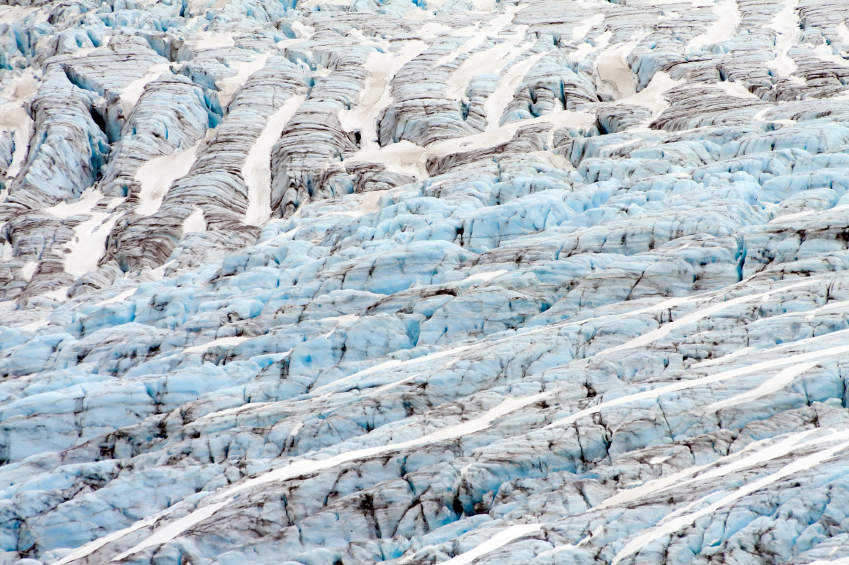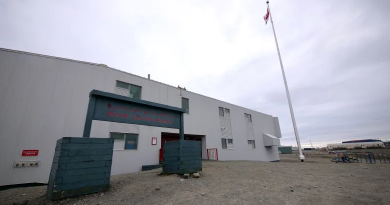Alaska’s Harding Icefield loses mass

The huge Harding Icefield on Alaska’s Kenai Peninsula shed some of its mass over the past year and Exit Glacier, which spills out of that 700-square mile icefield, retreated more than in any other single year since annual mapping of the terminus began in 2005, according to National Park Service data.
The measurements, taken by scientists working in Kenai Fjords National Park, are part of a long-term program to monitor changes in the park’s glaciers and their mass.
On the icefield, measurements taken this fall at four of the six monitoring sites showed a net loss of mass, with all of the past winter’s snowfall melted out by the end of September. The biggest melt was at a site 1,745 feet up the icefield, the lowest-elevation of the six sites monitored by the Park Service, where nearly 28 vertical feet of ice was lost, according to measurements.
At two of the six sites — the highest-elevation sites monitored by the Park Service — some of last winter’s snowfall was retained, according to the data.
That has been the general pattern so far, said Deborah Kurtz, a Park Service scientist who is coordinating the Kenai Fjords glacier-monitoring project. “At lower sites, we are seeking overall melt, or ablation,” she said. “The melt is usually greater than the accumulation.”
But there is great variation between years and specific sites, Kurtz said.
Ice loss and mass measurements
Two of the past five years’ measurements showed a gain in mass — more accumulation than melt — one year’s measurements showed no change and measurements in the past two years showed a net loss, with more melt than accumulation.
The ice loss was biggest in 2013, a particularly warm year, Kurtz said. The past year was not quite as warm, and there was significant high-altitude snowfall in October and December that contributed to the icefield mass, she said.
Mass is determined by measurements of snow depth, snow density, snow-water equivalent and elevation, she said.
At Exit Glacier, a major Alaska tourism attraction, the terminus retreated 187 feet in the past year, according to measurements taken last month. About 80 percent of that retreat happened during the summer, according to the Park Service measurements.
From 1815 to 1999, Exit Glacier retreated at an average rate of 43 feet a year, though at widely varying rates, according to a Park Service analysis. Since then, retreat has continued at an uneven pace. The average annual retreat between 1973 and 2013 was a little over 30 feet or 9.2 meters, according to Park Service records.
Exit Glacier is one of Alaska’s few road-accessible glaciers. Tourists driving to the glacier can learn about its retreat from signposts along the road, which mark its previous reach. The retreat has also affected Kenai Fjords’ amenities; the Park Service recently had to reroute a visitor trail after the shrinking glacier disappeared from the view of what was supposed to be an overlook site for visitors.
Unlike the icefield, where year-to-year mass changes reflect year-to-year weather, retreat of Exit Glacier and similar glaciers is a more long-term phenomenon, according to a summary report prepared by Kurtz. Those glaciers retreat because of a lagged response to long-term climate change, the report said. The retreat is also influenced by glacier geometry, the report said.
Global melt
Changes at Exit Glacier and the wider Harding Icefield are part of a global pattern of mostly melting and shrinking glaciers. But there are wide variations.
In southeastern Iceland, a well-known glacier is melting so fast that its shrunken lower section has become detached, according to a new study published in the Journal of Geophysical Research: Earth Surface.
Falljökull Glacier, which was actively retreating from 1990 to 2004, crossed a threshold after that, said the study, conducted by the British Geological Survey. Now the lower part of the glacier is stagnant — though undergoing long-term decay — and the upper section has started to override it, even as the margins continue to shrink, according to the study. Melt is occurring year-round, not just in summer, and the newly discovered melt pattern is highly unusual, the study said.
In contrast, certain Himalayan glaciers are expanding, even though most are melting and retreating. A new study published in the journal Nature Geoscience pinpoints what researchers believe are the special circumstances that protect those glaciers and account for the long-noted “Karakoram Anomaly.”
The geographic configuration of the Karakoram mountains, which are located along the border of China, India and Pakistan, and their altitude shield them from the warm monsoons, the study says. Elsewhere in the Himalayan and Tibetan plateau region, monsoon rains have helped melt glaciers, but most of the precipitation in the Karakoram range is snow, making those glaciers more durable, the study said.
Related stories from around the North:
Canada: Climate change adversely affecting Arctic wildlife, Radio Canada International
Finland: Finland’s president calls for action at UN climate summit, Yle News
Greenland: Soot from Canadian wildfires may have increased Greenland ice melt, Radio Canada International
Russia: Giant virus revived from ancient permafrost in Siberia, CBC News
Sweden: Sweden to present new climate change project at UN conference, Radio Sweden
United States: NASA projects tracking changes in Alaska’s glaciers and Arctic atmosphere, Alaska Dispatch



